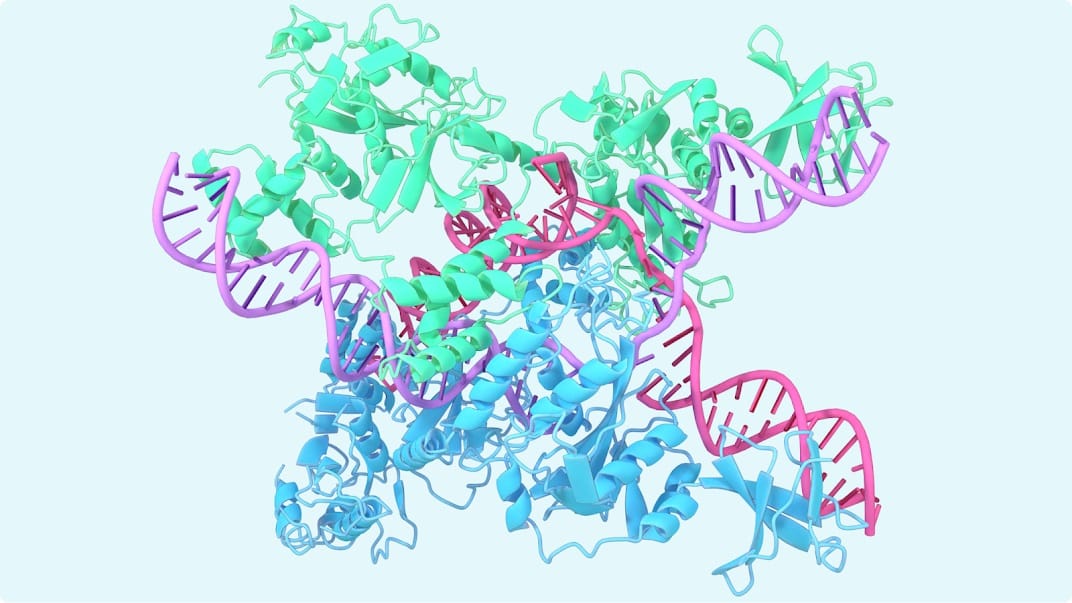Protein Prediction AI Tool AlphaFold 3 Becomes Open-Source
AlphaFold 3 is becoming open-source, offering scientists an advanced tool for predicting protein structures and molecular interactions, accelerating research.

On November 11, 2024, DeepMind took a bold step forward by making AlphaFold 3 available to the public. This groundbreaking decision means that scientists and researchers around the globe can now utilize this cutting-edge tool to predict protein structures and understand molecular interactions with unprecedented accuracy. By releasing both the code and model weights, DeepMind is empowering the scientific community to explore and adapt AlphaFold 3 across a wide range of research fields.
Why AlphaFold Matters in Protein Science
Proteins are the workhorses of our cells, involved in virtually every biological process. However, determining their three-dimensional structures has long been a daunting challenge, often requiring years of meticulous laboratory work using methods like X-ray crystallography. These traditional techniques are not only time-consuming but also expensive.
AlphaFold revolutionizes this landscape by leveraging machine learning to predict protein structures directly from their amino acid sequences. This innovation dramatically reduces the time and resources needed, allowing scientists to focus more on understanding protein functions and interactions rather than spending extensive periods on structure determination.
What's New with AlphaFold 3
AlphaFold 3 builds upon its predecessors by introducing several significant enhancements that broaden its applicability:
- Advanced Interaction Predictions: Unlike earlier versions that focused solely on individual proteins, AlphaFold 3 can now predict how proteins interact with other molecules, including DNA, RNA, and other proteins. This capability is vital for unraveling complex cellular processes and holds immense potential for drug discovery, where understanding these interactions can lead to the development of targeted therapies.
- Comprehensive Protein Coverage: The AlphaFold Protein Structure Database has expanded to include over 200 million protein structures, covering nearly every known protein. This extensive repository serves as an invaluable resource for researchers, providing structural insights into a vast array of proteins they may be studying.
- Unmatched Accuracy and Flexibility: AlphaFold 3 continues to set the standard in predictive accuracy for protein structures. Its ability to handle both simple and intricate proteins, including large multi-protein complexes, opens new avenues in diverse fields such as evolutionary biology, synthetic biology, and genomics.
The Impact of Open-Sourcing AlphaFold 3
By open-sourcing AlphaFold 3, DeepMind is democratizing access to powerful protein prediction tools. Laboratories that previously lacked the computational resources can now run AlphaFold 3 on their own systems, seamlessly integrating it into their research workflows. This accessibility fosters greater collaboration and innovation, as scientists can tailor and enhance the tool to meet their specific research needs.
Transformative Applications Across Research Fields
- Drug Discovery and Development: AlphaFold 3 accelerates the identification of therapeutic targets by accurately predicting how proteins interact with various molecules. This efficiency reduces the trial-and-error phase in early-stage drug development, potentially speeding up the creation of new treatments.
- Biomedical Research and Genetics: Understanding protein interactions is crucial for deciphering gene regulation and the effects of genetic mutations. AlphaFold 3's predictive power offers valuable insights into genetic disorders and complex diseases, providing a foundation for developing intervention strategies.
Looking Ahead
The release of AlphaFold 3 as an open-source tool marks a significant milestone in making sophisticated, resource-intensive research accessible to a broader scientific community. As laboratories worldwide begin to incorporate AlphaFold 3 into their unique studies, we can anticipate a surge in discoveries that will have profound implications for health, genetics, and biotechnology. The future of protein science is brighter than ever, thanks to this remarkable advancement.